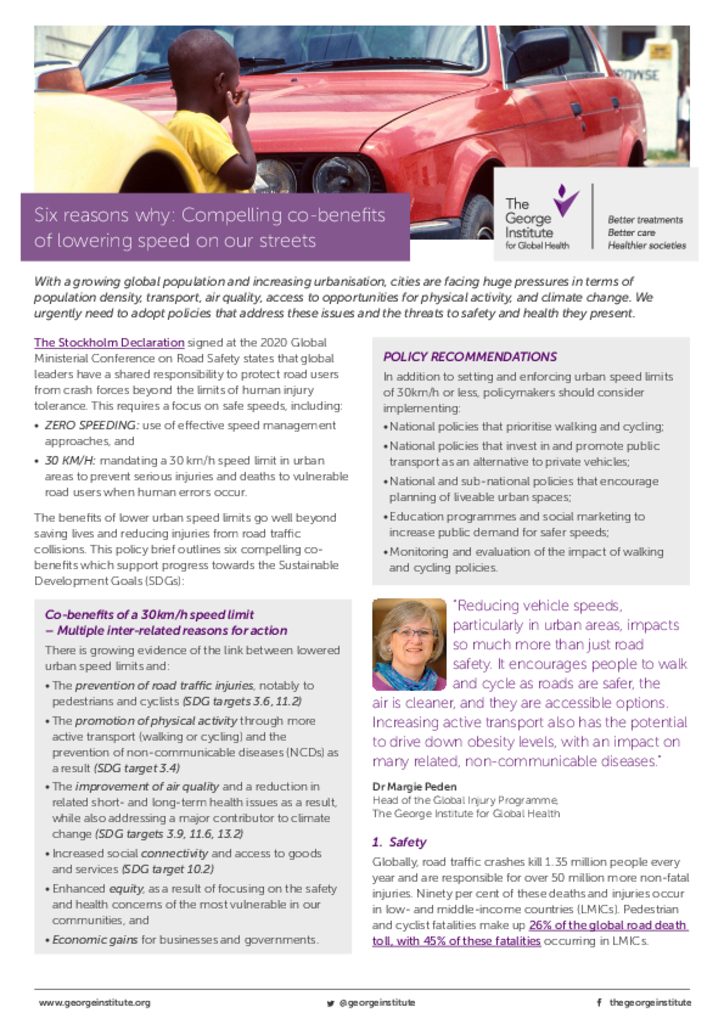
Six reasons why: Compelling co-benefits of lowering speed on our streets
With a growing global population and increasing urbanisation, cities are facing huge pressures in terms of population density, transport, air quality, access to opportunities for physical activity, and climate change. We urgently need to adopt policies that address these issues and the threats to safety and health the present.
The Stockholm Declaration signed at the 2020 Global Ministerial Conference on Road Safety states that global leaders have a shared responsibility to protect road users from crash forces beyond the limits of human injury tolerance. This requires a focus on safe speeds, including:
- ZERO SPEEDING: use of effective speed management approaches, and
- 30 KM/H: mandating a 30 km/h speed limit in urban areas to prevent serious injuries and deaths to vulnerable road users when human errors occur.
The benefits of lower urban speed limits go well beyond saving lives and reducing injuries from road traffic collisions. This policy brief outlines six compelling co-benefits which support progress towards the Sustainable Development Goals (SDGs). There is growing evidence of the link between lowered urban speed limits and:
- The prevention of road traffic injuries, notably to pedestrians and cyclists (SDG targets 3.6, 11.2)
- The promotion of physical activity through more active transport (walking or cycling) and the prevention of non-communicable diseases (NCDs) as a result (SDG target 3.4)
- The improvement of air quality and a reduction in related short- and long-term health issues as a result, while also addressing a major contributor to climate change (SDG targets 3.9, 11.6, 13.2)
- Increased social connectivity and access to goods and services (SDG target 10.2)
- Enhanced equity, as a result of focusing on the safety and health concerns of the most vulnerable in our communities, and
- Economic gains for businesses and governments.
POLICY RECOMMENDATIONS
In addition to setting and enforcing urban speed limits of 30 km/h or less, policymakers should consider implementing:
- National policies that prioritise walking and cycling;
- National policies that invest in and promote public transport as an alternative to private vehicles;
- National and sub-national policies that encourage planning of liveable urban spaces;
- Education programmes and social marketing to increase public demand for safer speeds;
- Monitoring and evaluation of the impact of walking and cycling policies.







